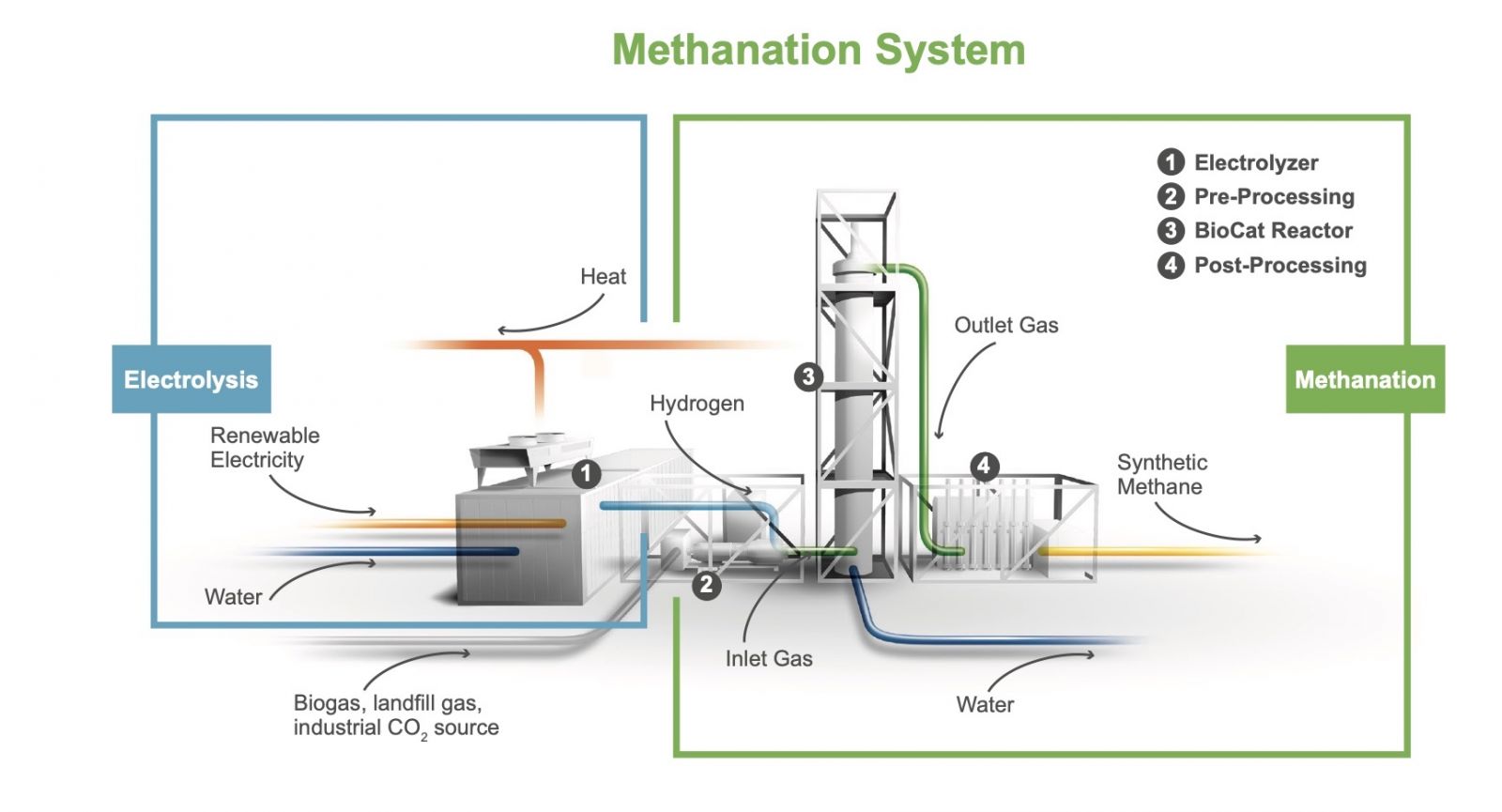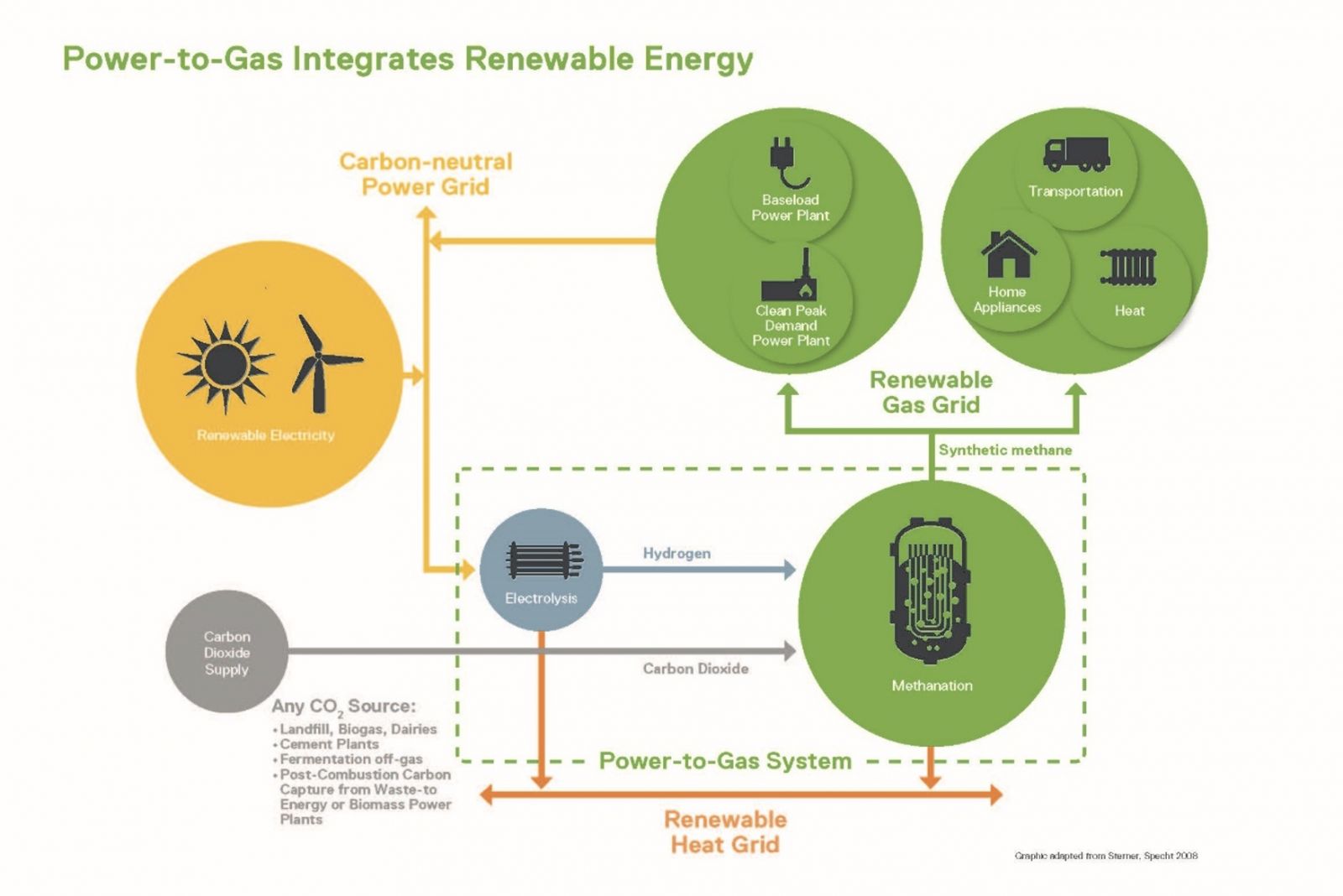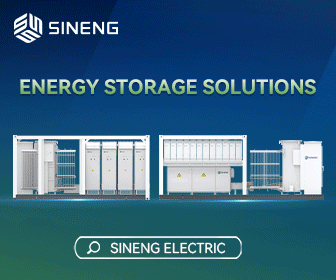Clean Energy Storage in Synthetic Methane
Power-to-gas is a technology by which the energy of a power source is stored in the form of a gas. When power-to-gas is combined with methanation, a clean synthetic methane is produced from CO2 and hydrogen, which is a renewable and clean drop-in replacement for fossil natural gas. Power-to-gas methanation has many advantages, including efficient use of power that would otherwise be curtailed, long-term and high capacity (TWh) energy storage, and production of low carbon intensity (CI) fuel. This long-duration (weeks to months) energy storage cannot be accomplished with traditional batteries.
As an example of power-to-gas methanation, CO2 and clean hydrogen are combined by a microorganism, called ‘Archaea’, to produce clean, synthetic methane with a CI that is significantly lower than fossil natural gas. Thus, use of low CI synthetic methane significantly reduces GHG emissions, utilizes investment in existing gas distribution and storage infrastructure, and promotes full use of renewable generation assets, all while supporting the market for construction of new renewable resources. A two-step power-to-gas methanation process is illustrated in Figure 1.

Figure 1. (1) Renewable electricity is used to produce clean hydrogen by electrolysis, (2) hydrogen and carbon dioxide are delivered to the reactor (3) in which clean, synthetic methane is synthesized by the archaea. (4) Synthetic methane is prepared for grid injection or use.
Power that would be otherwise curtailed
Power-to-gas methanation technology makes it possible to store renewable energy and recycle CO2 in a cost-effective way. This technology eliminates the temporal link between energy supply and demand, allowing efficient energy storage in methane. When renewable power is available but cannot be used immediately, the power must be curtailed. If this otherwise curtailed power is available to produce synthetic methane, the energy will not be lost; it can instead be stored in the gas infrastructure (Figure 2). This enables full use of renewable energy production, even in the absence of available consumers, which allows for the continued growth of the market for renewable electric power. Application of power-to-gas methanation produces clean methane that can be used for power generation in both combined cycle gas turbine baseload plants and gas turbine peaker plants.

Figure 2. An illustration of synthetic methane as a means to store renewable energy
Duration energy storage that outlasts traditional batteries
Power-to-gas adds a critical and additional advantage to renewable energy generation by providing seasonal storage of renewable energy. Analogous in many ways to pumped hydro or other forms of gravity-based storage, power-to-gas methanation converts wasted power generation into synthetic methane for much later future use. In this way, the existing gas grid and connected storage facilities become the largest battery in the US, storing renewable energy for use later in the day, month, or even year. The US has the design capacity to store ~4,690 billion cubic feet of natural gas, which is equivalent to 1.37 billion MW; ~6,000 MW of battery storage capacity was planned for 2021. Thus, there is as much as 23,000 times the amount of storage in the natural gas infrastructure as in the 2021 battery storage capabilities. Unlike traditional battery technologies, the ‘state of charge’ of the gas grid is effectively insensitive to a charge/discharge cycle. The gas infrastructure would essentially never be full of renewable energy, and would not degrade its state of charge during storage. Using existing infrastructure reduces capital investment, technology risk, and land use concerns.
Accelerate development of renewable power generation assets
When stored in the existing natural gas reservoirs, clean, synthetic methane can provide reliability benefits to the power grid while providing renewable electricity. A renewable gas reserve enables continued use of current electricity generation assets to produce low CI electricity, maintaining jobs and existing infrastructure with known reliability and performance metrics. Developing a renewable gas transmission system for power ramping needs is critical. For example, the recently projected load ramps in California (in excess of 25,000 MW by 2030) are unlikely to be met by solar and wind alone, which cannot respond on demand. Increasing the intermittent renewable resources on the grid will exacerbate not only the ramping needs in the afternoon, but also the intermittency and curtailment issues seen throughout the day. The loss of renewable production for even short periods of time, due to weather conditions alone, could jeopardize the power grid in the absence of reliable, proven gas generations assets.
A synergy exists in the coupling of the renewable power sector with renewable gas production. As intermittent renewable electricity generation increases, there will necessarily be greater curtailment of electricity generation. The power that is being curtailed could be stored in the synthetic methane molecule using power-to-gas processes. By providing a buyer for economically curtailed power, production of low-cost renewable gas is enabled, and lost revenues for the renewable power producers are recovered. In addition, clean fuels produced using power-to-gas processes are capable of providing very-long-duration storage. This can play a significant role in addressing the seasonal mismatch in supply and demand that makes it difficult to achieve 100 percent renewable electricity. The power-to-gas process can provide a perpetually sustainable fuel, stabilize economic returns for the developers of renewable power, and reduce the risks involved in the development of additional renewable generation assets.
Mark Pastore is Director of Sales and Business Development, North America at Electrochaea Corporation, which produces renewable methane at industrial scale that can be used to green the gas grid, continue to green the power grid, and recycle any source of CO2.
Electrochaea Corporation | www.electrochaea.com
Author: Mark Pastore
Volume: 2022 July/August









